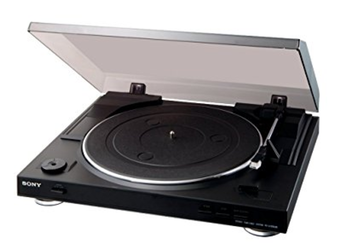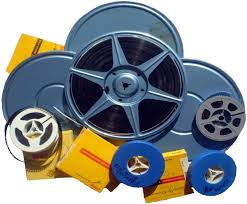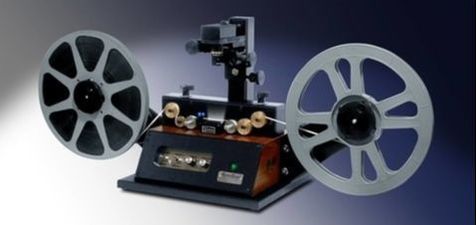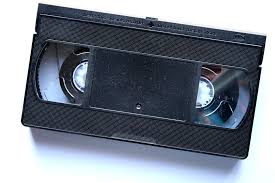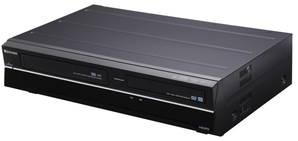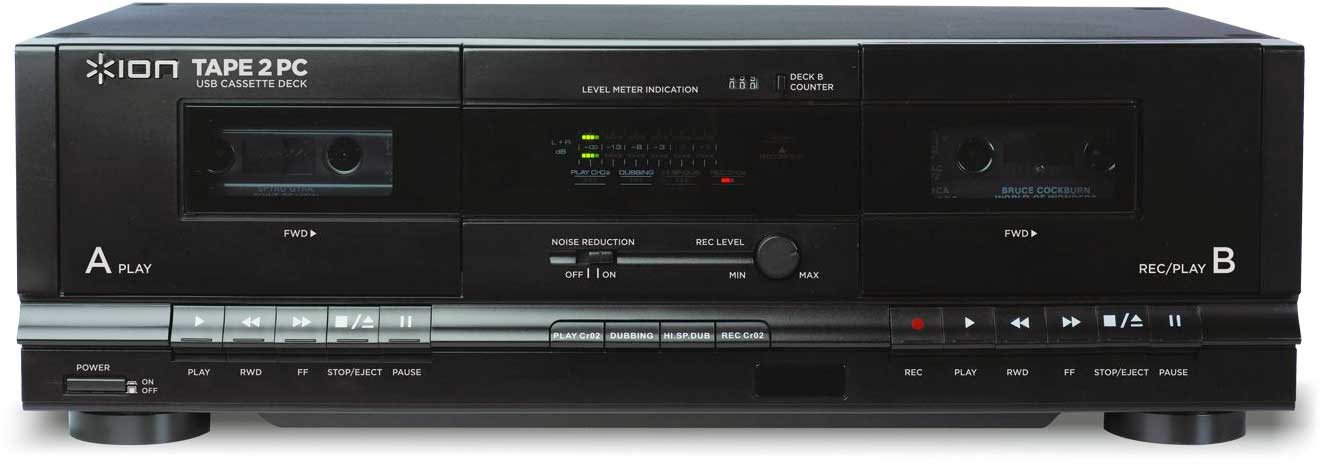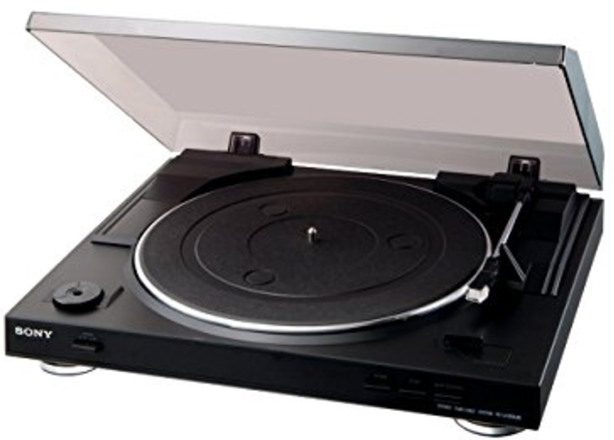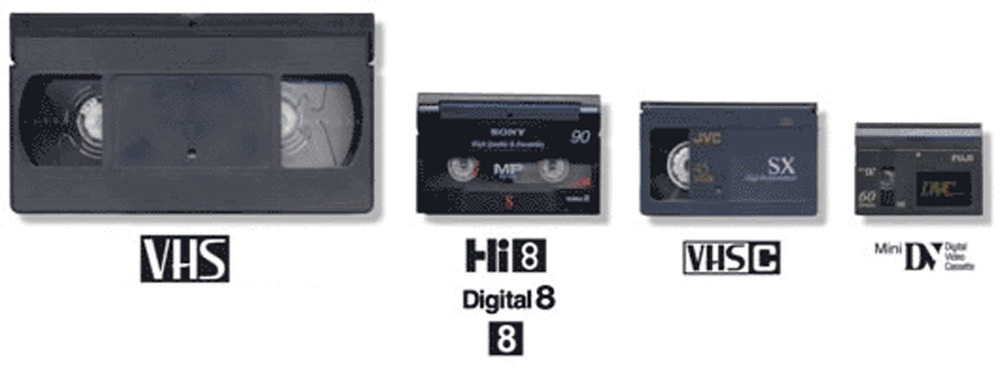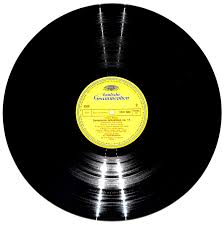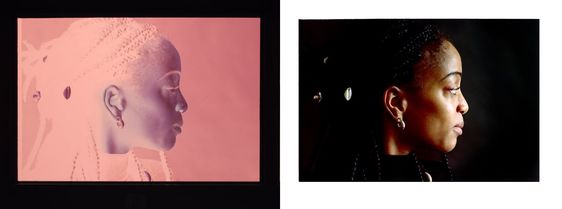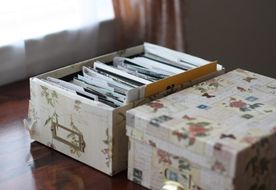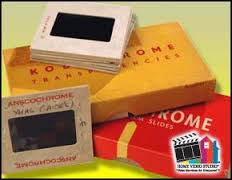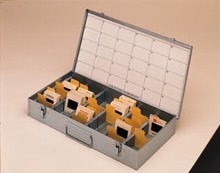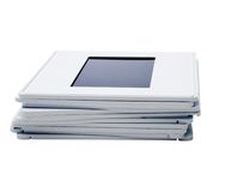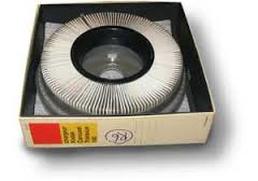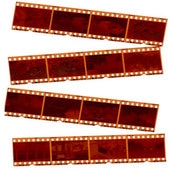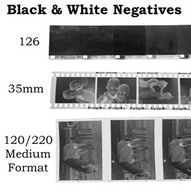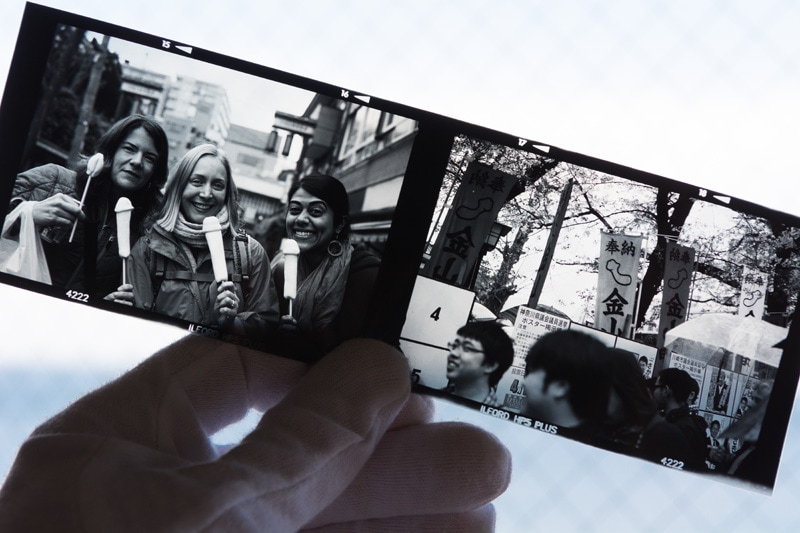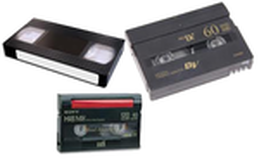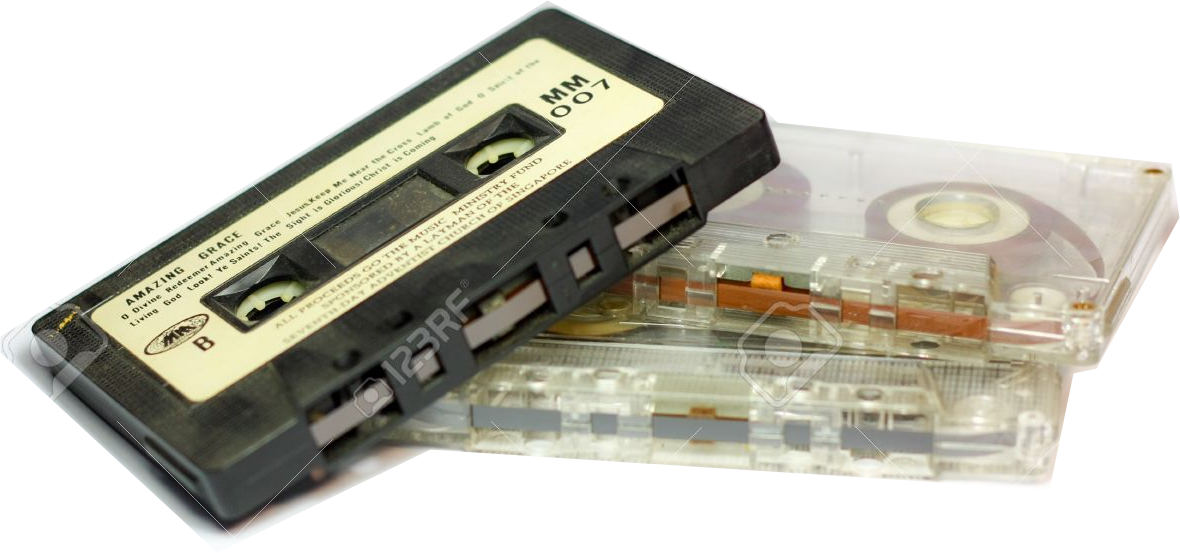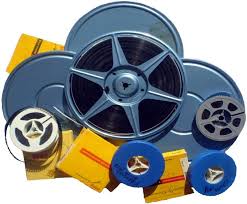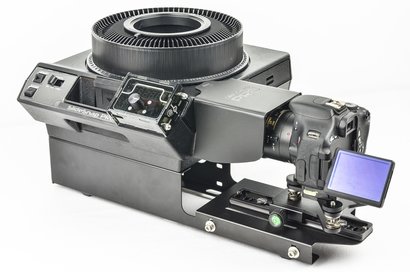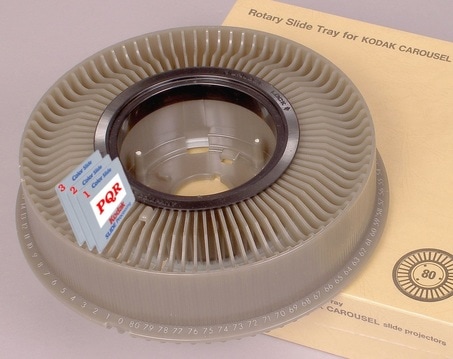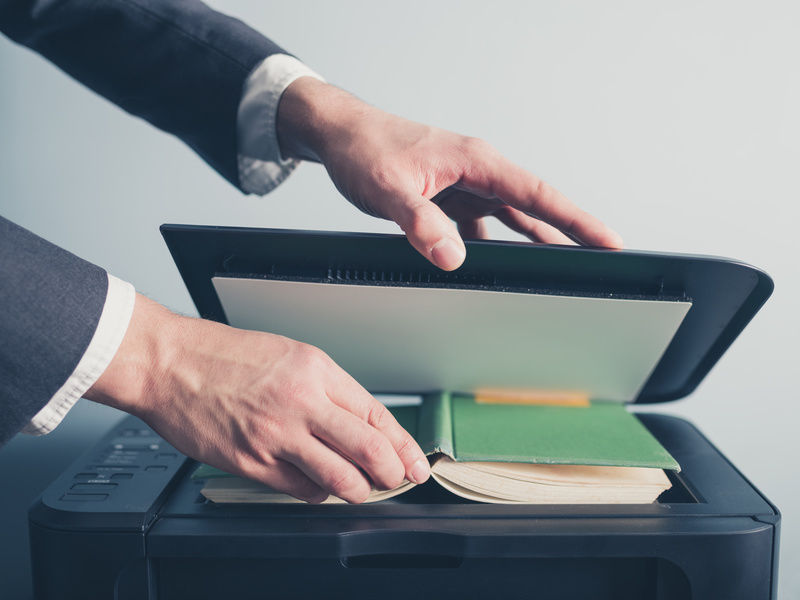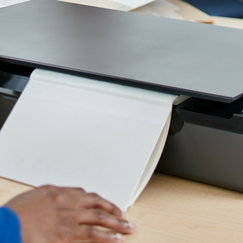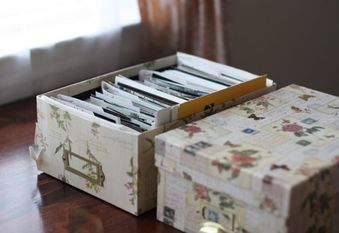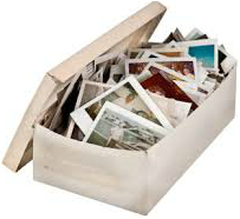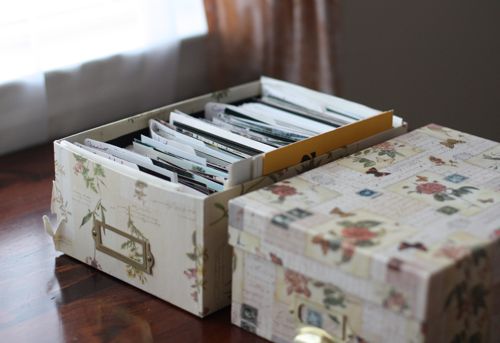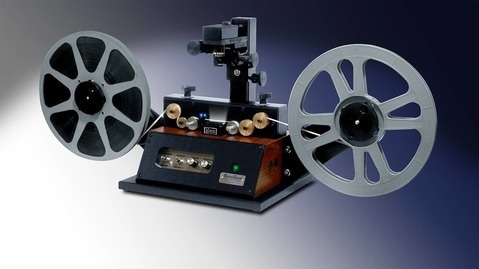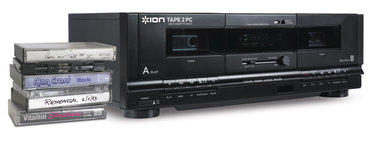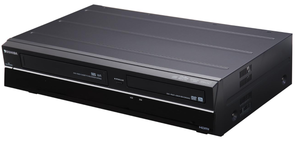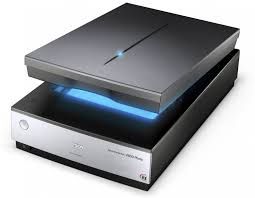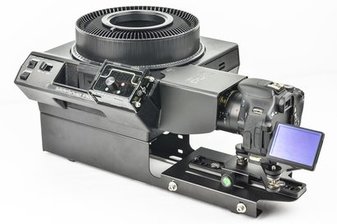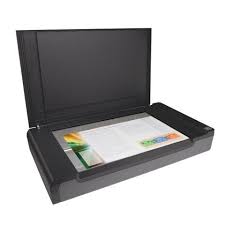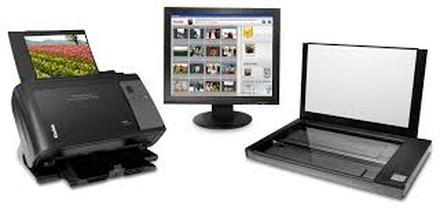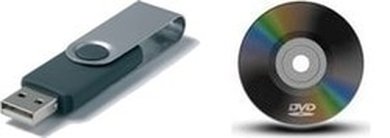|
6/26/2017 Sony PSLX300USB USB Stereo TurntableThe Sony PSLX300USB is identical to normal turntables, with one exception. In addition to having standard RCA phono outputs, it also has a USB output that instead of emitting an analog phono level signal, sends a digitized version of the analog level signal. When this turntable is connected via the USB connector to a computer running an audio capture program ( Audacity ), a digital conversion of sounds coming from the record on the turntable is saved. Subsequent to the digitization of the recording, addition tools in Audacity can be used to remove imperfections resulting from surface dust and scratches from the digital representation.
For more information about this conversion device, please see:
We are very excited about this new service-line for us. Our newest acquisition is the RetroScan Universal multi-format scanner. This beautiful machine (dark wood base with brass fittings and large takeup reel) is unique in that it does not have sprockets in the film path. This is much gentler on film. Instead, the film is pulled by the takeup reel through the film path. In the center of the film path there is an LED illuminator underneath the fil. Directly above the illuminator is a high speed digital camera that takes pictures of the illuminated film. The individual still pictures are analyzed in software to determine the position of the discrete frames. A digital MP4 movie is created out of this stream of still pictures.
Our service offering covers three original film formats (8mm, Super 8mm, and 16mm), with two output formats (DVD and MP4):
As with Video Tape conversions, we are happy to do further editing on your Movie Film conversions to create more polished digital movies at our standard manual labor rate. 6/22/2017 If I have several tapes that end before the end of the tape, can you combine them onto one DVD?In order to keep our prices down, we use as many automated processes as possible. Looking at a videotape to determine where it ends, and then combining that recording with another on the same DVD takes up a significant amount of time. So normally we do not do this. If you want us to do this we are happy to combine multiple tapes on a single DVD. as well as do further editing on your Video Tape conversions to create more polished digital movies at our standard manual labor rate.
6/22/2017 What services do you offer for converting Video and Audio cassette tapes and Vinyl LP Records?There are a wide variety of formats for video tape cassettes probably due to the rapid advancements in technology between 1980 and today. Less change happened in audio cassette technology and 33rpm Vinyl LP records. We are able to convert the following formats of video and audio:
There are two output representations for converted video: DVD or MP4. DVD is the traditional encoding that can be played back on a DVD player. MP4 is a more modern representation that can be played back on computers, streamed to web browsers, or even played directly on a HDTV. You have a choice of DVD or MP4 or both. There are two output representations for converted audio: CD or MP3.
Yes, we can make prints of your scanned negatives. We use local photo processing services and charge you the cost of the service we use plus a small amount for our time consumed submitting your order for the prints and picking them up so we can deliver your order as one complete transaction.
With our newly acquired Epson V800 scanner, we can now efficiently scan negatives and positive transparencies at an optical resolution of 6400 dpi. The difference in scanning a positive print and a negative or positive transparency is while a positive print is scanned with reflective light, transparencies must be scanned with transmitted light -- light that passes through the photographic object. The Epson V800 has a light in the cover to illuminate the transparency so that the imaging bar traveling the length of the flatbed receives light transmitted through the transparency.
We offer three different services for scanning negatives and positive transparencies:
To read an article about the practical view of scanning resolutions, please see: Resolving Resolution. Prints
In general, we use the following rule about estimating the number of prints neatly arranged in a stack: A pack of photo prints that is 1 inch thick is about 100 prints. So, just put your photos in a box (like the one below), measure the number of inches of photos and multiply by 100.
Photo Album Pages
We need four numbers: the dimensions of the page (width and height), the number of album page sides you wish to scan, and the average number of photos per side.
35mm Slides
35mm film usually comes/came in rolls of 24 or 36 exposures and so if you have boxes in which the developed slides were returned to you, they will come in boxes that hold 24 or 36 slides. Of course many people have put their slides in special plastic and metal boxes which hold slides. Since each of these boxes hold different quantities of slides, you will just have to count them yourself. Finally, some people have slides in various types of packages. A stack of slides 1 inch high is about 25 slides. Kodak Carousels hold either 80 slides or 140 slides.
Negatives or Positive Transparencies
35mm negatives usually come in strips. Since we scan an entire strip, it is the count of such strips that we need.
Medium format and large format negatives and positive transparencies usually come as individual items. Just count the number of these items. Video Cassette or Audio Cassette Tapes
The number we need is the count of the individual cassettes.
8mm, Super8mm or 16mm Movie Film
Conversion of Movie Film is charged by the foot. Film reels carry the following amounts of film.
The SlideSnap Pro is a combination of a modified Kodak Carousel slide projector plus a high resolution camera coupled to the projector by a control box. The original illuminator of the projector is replaced by an LED array light source for even lighting. In addition, the lens of the projector is removed, allowing the camera which is outfitted with a macro lens to directly capture the image of the illuminated the slide. For more information about this scanner, please see our SlideSnap Pro page. To read an article about the practical view of scanning resolutions, please see: Resolving Resolution. Prior to scanning slides, Carousel trays must be loaded with 35mm slides in a precise orientation. Arranging Slides in Trays For economy slide scanning, one of the tasks that the customer takes responsibility for is arranging slides in the proper order and orientation in Carousel trays. If you don't already have your slides in Carousel trays, we have a lot of empty Carousel trays that we can loan you to put your slides into. Note: If you are bringing Carousel trays that have been used with a Carousel projector to project slides on a screen, the slides will be in the trays upside down and backwards. You will need to do two things to get them in the proper orientation:
Here is another way to describe the second step above: Slides should be placed in order so that if you look from the top down on the carousel in the above illustration, the slides at 7 o'clock come before the ones at 8 o'clock in the sequence of slides. Slides should all be placed in the landscape orientation and have their tops or left sides be headed upwards. Also make sure that the slide is correctly viewed from the front as shown (not reversed so that the letters PQR are reversed). Once you figure out the right up/down, left/right, front/back for a particular brand of 35mm slide processing, it should be the same for all slides produced by that particular photo finishing processor. Once a photo is scanned -- whether it is a photo print, the individual photos on an album page, a 35mm slide, or a negative -- the same corrections are performed either by automatic or manual methods. These corrections include:
You should bring them in whatever packaging they are currently in. The photos above show several ways we frequently see.
Recently a client delivered her slides in the boxes used to hold Saran Wrap, which is a great way to old a lot of slides. 6/21/2017 What format of slides can you scan?We can scan almost any type of slide. The difference between slide types in our slide scanning service is the cost. Typically it costs more, the more manual labor involved in scanning a slide or negative.
Our automatic slide scanner accepts any size film that can be mounted in a 2"x2" mount. Most of our slides are 35mm slides, although as the images above show, there are other film sizes that we see mounted in 2"x2" cardboard, metal or plastic frames. We offer three different levels of service:
6/21/2017 Can you scan photo albums?Short answer: Yes! Longer answer: Yes. We do not remove photos from album pages, but rather scan complete pages and then separate the individual photos using a photo editor. Our A3 (11"x17") size flatbed scanner is capable of scanning full pages of most photo albums. The pages of some loose leaf albums are thin, flexible and small enough so that we can actually pass them through our automatic feed scanner, saving you money. And even with albums that use a clear plastic sheet over the photographs, we can scan them without removing the plastic sheet. The cost of scanning album pages has two components: one to account for scanning the complete page and one to account for the time spent separating the multiple photos on the page. The cost of scanning the complete page depends on the size of the page (up to 8.5"x14" versus up to 11"x17"). The cost of separating the individual photos of a page is the same as scanning an individual photo print. Although we do not want to discourage you from just collecting all of your stray photos any way you want and getting them to us so that we can get you started, there are some optional things that will help us in completing your order in a timely fashion.
One more thing: many times people get stuck trying to decide which photos to scan. People frequently contact us inquiring about our service saying that they are going through their photographs and will get back to us when they make their choices of which photos to scan. Unfortunately, this is sometimes as far as they get because of the amount of time and psychic burden they encounter when making choices about photos from long ago. After having seen this a lot of times, we have the following suggestion: Don't try to scan all of your photos at once. Isolate a partial batch of your entire collection, decide which ones you want to scan, bring them over, pick up your results. Once you see the results of your first batch of scans, you will know the joy of seeing quality scans of your memories and will become enthusiastic to tackle another portion of your collection. 6/20/2017 What sizes of photo prints can you scan?The automatic feeder on our main scanner can handle photos up to 8.5"x34". Our two manual scanners can handle prints that measure up to 8.5"x14" and 11"x17". We can also make multiple passes on a print larger than 11"x17" and create a composite scan of a photo print larger than 11"x17".
In general, we use the following rule about estimating the number of prints neatly arranged in a stack: A pack of photo prints that is 1 inch thick is about 100 prints. So, just put your photos in a box (like the one below), measure the number of inches of photos and multiply by 100.
We offer several different services:
Our newest acquisition is the RetroScan Universal multi-format scanner. This beautiful machine (dark wood base with brass fittings and large takeup reel reminiscent of Steampunk design) is unique in that it does not have sprockets in the film path. This is much gentler on film. Instead, the film is pulled by the takeup reel through the film path. In the center of the film path there is an LED illuminator underneath the fil. Directly above the illuminator is a high speed digital camera that takes pictures of the illuminated film. The individual still pictures are analyzed in software to determine the position of the discrete frames. A digital MP4 movie is created out of this stream of still pictures. For more information about this scanner, please see:
This device can convert a Audio Cassette tape to an MP3 file. For more information about this scanner system, please see:
6/20/2017 Toshiba DVR620 DVD Recorder/VCR ComboThis device can convert a VHS video tape into a DVD. In addition, it can accept video and audio connections from any video playback device (e.g., various formats of camcorders) to replace the VHS video signal. We currently have 3 camcorders: 8mm, Hi8, and mini DV, plus a carrier that allows a VHSC format tape to be inserted as a VHS tape. For more information about this scanner system, please see:
6/20/2017 Epson Perfection V800 Photo ScannerWe use this scanner for negatives and positive transparencies because the thick cover contains illumination for backlighting of the film. Transparencies require transmitted light unlike prints that rely on reflected light for scanning. For more information about this scanner system, please see:
6/20/2017 SlideSnap Pro Slide ScannerOur slide scanner is a hybrid combination of a Kodak Carousel slide projector plus a high resolution camera coupled to the projector by a control box.
For more information about this scanner, please see:
6/20/2017 Kodak A3 (11"x17") size flatbed ScannerThis scanner is identical to the Kodak 8.5"x14" Legal Flatbed Scanner, except for the dimensions. It connects to the central Kodak PS80 Picture Saver System. For more information about this scanner system, please see:
The Kodak PS80 Picture Saver Scanning System is the central workhorse of our photo and album page scanning service. Connected to this system is a Kodak Autofeed (8.5"x34") size, two sided scanner. This has an automatic feed mechanism that handles photo prints gently with utmost care. This workhorse can feed photo prints through the scanner and record both sides of a photograph. It's throughput is approximately one print every 2 seconds. Also attached to this system are two manually fed flatbed Kodak scanners: one can scan documents up to 8.5"x14". The other can handle documents up to 11"x17". Scans from all three attached scanners are handled the same way making the workflow uniform no matter what type/size of photo print is being scanned. For more information about this scanner system, please see:
Scanned photos, album pages, negatives, and converted audio cassettes are delivered on USB Flash Memory drives. Converted video cassettes and 8mm Super8mm and 16mm home movies can be delivered on DVD discs and/or USB Flash Memory drives. The following table shows the digital delivery format for each of the media types.
|
Search by typing & pressing enter

